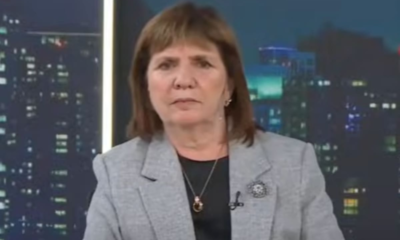INTERNACIONAL
Russia sat on intel of Hillary Clinton’s alleged ‘heavy tranquilizers’ use, new docs claim

NEWYou can now listen to Fox News articles!
Russia allegedly had intelligence suggesting that former Secretary of State Hillary Clinton was taking «heavy tranquilizers,» which former President Barack Obama and Democratic Party leaders found to be «extraordinarily alarming,» a newly declassified intelligence report claims.
Fox News Digital first reported that the U.S. intelligence community did not have any direct information that Russian President Vladimir Putin wanted to help elect Donald Trump during the 2016 election, but, at the «unusual» direction of then-President Obama, reportedly published «potentially biased» or «implausible» intelligence suggesting otherwise.
BRENNAN DIRECTED PUBLICATION OF ‘IMPLAUSIBLE’ REPORTS CLAIMING PUTIN PREFERRED TRUMP IN 2016, HOUSE FOUND
The information came from a report declassified by Director of National Intelligence Tulsi Gabbard. The report was prepared by the House Permanent Select Committee on Intelligence in 2020.
The report, which was based on an investigation launched by former House Intelligence Committee Chairman Devin Nunes, R-Calif., was dated Sept. 18, 2020. At the time of the publication of the report, Rep. Adam Schiff, D-Calif., was the chairman of the committee.
The report had never before been released to the public, and instead, remained highly classified within the intelligence community.
Fox News Digital obtained the «fully-sourced limited-access investigation report that was drafted and stored in a limited-access vault at CIA Headquarters.» The report includes some redactions.
One section of the report states that the material in Putin’s possession included Russian intelligence on Democratic National Committee information allegedly showing that senior Democrat leaders found Clinton’s health to be «extraordinarily alarming.»
Then-President Obama stands with then-Secretary of State Hillary Clinton. (AP)
«As of September 2016, the Russian Foreign Intelligence Service had DNC information that President Obama and Party leaders found the state of Secretary Clinton’s health to be ‘extraordinarily alarming,’ and felt it could have ‘serious negative impact’ on her election prospects,» the report states. «Her health information was being kept in ‘strictest secrecy’ and even close advisors were not being fully informed.»
The Russian Foreign Intelligence Service also allegedly had DNC communications that showed that «Clinton was suffering from ‘intensified psycho-emotional problems, including uncontrolled fits of anger, aggression, and cheerfulness.’»
«Clinton was placed on a daily regimen of ‘heavy tranquilizers’ and while afraid of losing, she remained ‘obsessed with a thirst for power,’» the report states.
The Russians also allegedly had information that Clinton «suffered from ‘Type 2 diabetes, Ischemic heart disease, deep vein thrombosis, and chronic obstructive pulmonary disease.’»
The Russians also allegedly possessed a «campaign email discussing a plan approved by Secretary Clinton to link Putin and Russian hackers to candidate Trump in order to ‘distract the American public’ from the Clinton email server scandal.»
Gabbard, during the White House press briefing Wednesday, said there were «high level DNC emails that detailed evidence of Hillary’s, quote, psycho-emotional problems, uncontrolled fits of anger, aggression and cheerfulness, and that then Secretary Clinton was allegedly on a daily regimen of heavy tranquilizers.»
«Then CIA Director Brennan and the intelligence community mischaracterized intelligence and relied on dubious, substandard sources to create a contrived false narrative that Putin developed a, quote unquote, ‘clear preference’ for Trump,» Gabbard said. «Brennan and the IC misled lawmakers by referencing the debunked Steele dossier to assess, quote unquote, ‘Russia’s plans and intentions,’ falsely suggesting that this dossier had intelligence value when he knew that it was discredited, the intelligence community excluded significant intelligence and ignored or selectively quoted reliable intelligence that contradicted the intelligence community assessments.»
«Key findings on Putin’s alleged support for Trump, including this intelligence reporting, would have exposed the ICA’s claim as implausible, if not ridiculous,» she said.
Neither Clinton nor Obama responded to Fox News Digital’s request for comment.
A tranquilizer is a drug used to reduce mental disturbance, such as anxiety and tension. Tranquilizers are typically prescribed to individuals suffering from anxiety, sleep disturbances and related conditions affecting their mental and physical health.
OBAMA OFFICIALS ADMITTED THEY HAD NO ‘EMPIRICAL EVIDENCE’ OF TRUMP-RUSSIA COLLUSION: HOUSE INTEL TRANSCRIPTS
Fox News Digital, in 2020, first reported on the «Clinton Plan.»

President Barack Obama waves on stage with Democratic presidential candidate Hillary Clinton during a rally at Independence Hall in Philadelphia, Nov. 7, 2016. (Pablo Martinez Monsivais/The Associated Press)
On July 28, 2016, then-CIA Director John Brennan briefed Obama on a plan from one of Clinton’s campaign foreign policy advisors allegedly «to vilify Donald Trump by stirring up a scandal claiming interference by the Russian security service.»
Comey, Vice President Joe Biden, Attorney General Loretta Lynch and Director of National Intelligence James Clapper were in the Brennan–Obama briefing.
After that briefing, the CIA reportedly properly forwarded that information through a Counterintelligence Operational Lead (CIOL) to Comey and Deputy Assistant Director of Counterintelligence Peter Strzok, with the subject line: «Crossfire Hurricane.»
Fox News Digital exclusively obtained and reported on the CIOL in October 2020, which stated: «The following information is provided for the exclusive use of your bureau for background investigative action or lead purposes as appropriate.»
«Per FBI verbal request, CIA provides the below examples of information the CROSSFIRE HURRICANE fusion cell has gleaned to date,» the memo continued. «An exchange (REDACTED) discussing US presidential candidate Hillary Clinton’s approval of a plan concerning US presidential candidate Donald Trump and Russian hackers hampering US elections as a means of distracting the public from her use of a private email server.»
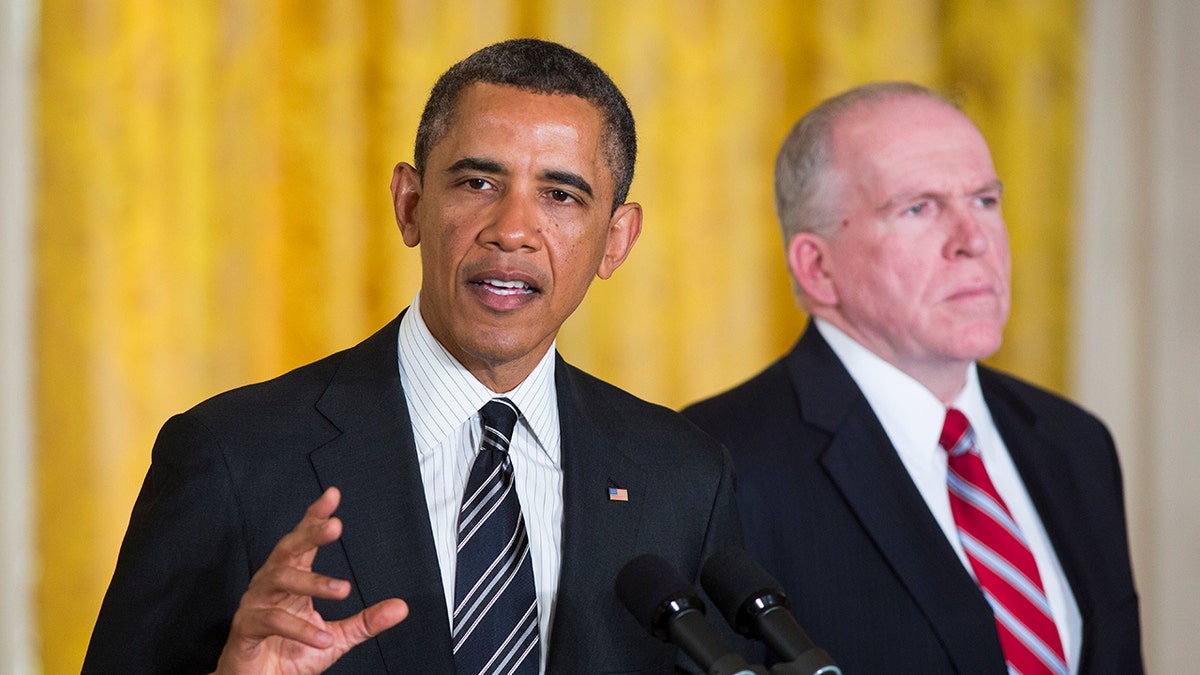
President Barack Obama in the East Room of the White House announcing he was nominating John Brennan as the new CIA director. (Brooks Kraft LLC/Corbis via Getty Images)
The FBI on July 31, 2016, opened a counterintelligence investigation into whether candidate Trump and members of his campaign were colluding or coordinating with Russia to influence the 2016 campaign. That investigation was referred to inside the bureau as «Crossfire Hurricane.»
OBAMA ADMIN ‘MANUFACTURED’ INTELLIGENCE TO CREATE 2016 RUSSIAN ELECTION INTERFERENCE NARRATIVE, DOCUMENTS SHOW
Former Special Counsel Robert Mueller was appointed to take over the FBI’s original «Crossfire Hurricane» investigation. After nearly two years, Mueller’s investigation, which concluded in March 2019, yielded no evidence of criminal conspiracy or coordination between the Trump campaign and Russian officials during the 2016 presidential election.
Shortly after, John Durham was appointed as special counsel to investigate the origins of the «Crossfire Hurricane» probe.
Durham found that the FBI «failed to act» on a «clear warning sign» that the bureau was the «target» of a Clinton-led effort to «manipulate or influence the law enforcement process for political purposes» ahead of the 2016 presidential election.
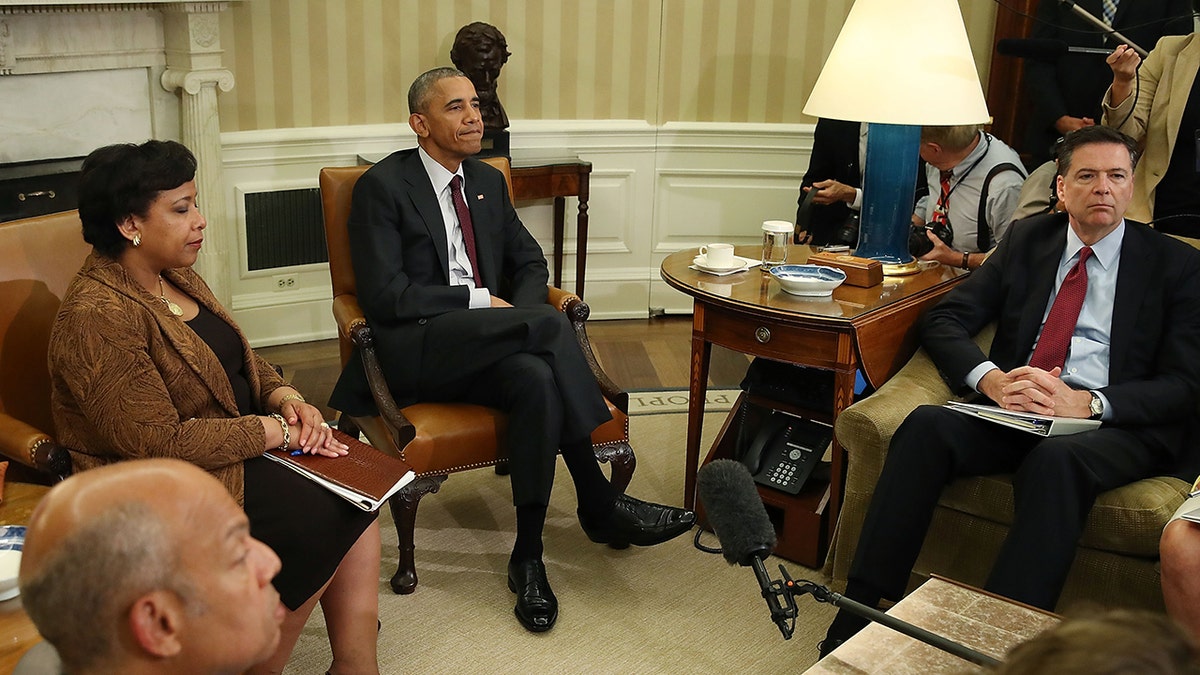
President Barack Obama speaks to the media after meeting with Attorney General Loretta Lynch and FBI Director James Comey in the Oval Office at the White House on July 19, 2016. (Mark Wilson/Getty Images)
«The aforementioned facts reflect a rather startling and inexplicable failure to adequately consider and incorporate the Clinton Plan intelligence into the FBI’s investigative decision-making in the Crossfire Hurricane investigation,» Durham’s report states.
«Indeed, had the FBI opened the Crossfire Hurricane investigation as an assessment and, in turn, gathered and analyzed data in concert with the information from the Clinton Plan intelligence, it is likely that the information received would have been examined, at a minimum, with a more critical eye,» the report continued.
Durham, in his report, said the FBI «failed to act on what should have been – when combined with other incontrovertible facts – a clear warning sign that the FBI might then be the target of an effort to manipulate or influence the law enforcement process for political purposes during the 2016 presidential election.»
Meanwhile, the report states that Brennan «ordered the post-election publication of 15 reports containing previously collected but unpublished intelligence, three of which were substandard – containing information that was unclear, of uncertain origin, potentially biased, or implausible – and those became foundational sources for the ICA judgments that Putin preferred Trump over Clinton.»
FBI LAUNCHES CRIMINAL INVESTIGATIONS OF JOHN BRENNAN, JAMES COMEY: DOJ SOURCES
«The ICA misrepresented these reports as reliable, without mentioning their significant underlying flaws,» the committee found.
«One scant, unclear, and unverifiable fragment of a sentence from one of the substandard reports constitutes the only classified information cited to suggest Putin ‘aspired’ to help Trump win,» the report states, adding that the ICA «ignored or selectively quoted reliable intelligence reports that challenged-and in some cases undermined – judgments that Putin sought to elect Trump.»
The report also states that the ICA «failed to consider plausible alternative explanations of Putin’s intentions indicated by reliable intelligence and observed Russian actions.»
The committee also found that two senior CIA officers reportedly warned Brennan that «we don’t have direct information that Putin wanted to get Trump elected.»
Despite those warnings, the Obama administration moved to publish the ICA.
The report also includes intelligence from a longtime Putin confidant who explained to investigators that «Putin told him he did not care who won the election,» and that Putin «had often outlined the weaknesses of both major candidates.»
FLASHBACK: DNI DECLASSIFIES BRENNAN NOTES, CIA MEMO ON HILLARY CLINTON ‘STIRRING UP’ SCANDAL BETWEEN TRUMP, RUSSIA
The report also stated that the ICA committed context showing that the claim that Putin preferred Trump was «implausible – if not ridiculous.»
The committee also found that the ICA suppressed intelligence that showed that Russia was actually planning for a Clinton victory because «they knew where (she) stood» and believed Russia «could work with her.»
The declassification of the report comes just days after Gabbard declassified and released documents that included «overwhelming evidence» that demonstrated how, after Trump won the 2016 election against Clinton, then-President Obama and his national security team laid the groundwork for what would be the yearslong Trump–Russia collusion probe.
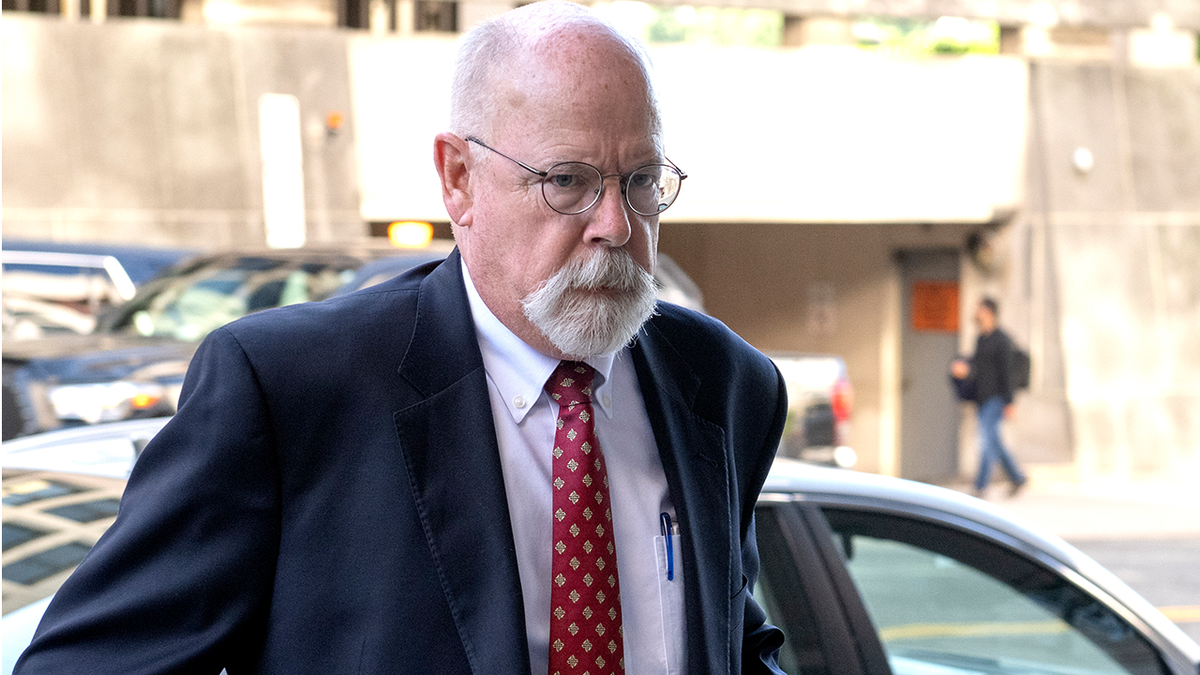
Special Counsel John Durham (Ron Sachs/Consolidated News Pictures/Getty Images)
Meanwhile, Fox News Digital, in 2020, exclusively obtained the declassified transcripts from Obama-era national security officials’ closed-door testimonies before the House Intelligence Committee, in which those officials testified that they had no «empirical evidence» of a conspiracy between the Trump campaign and Russia in the 2016 election, but continued to publicly push the «narrative» of collusion.
DURHAM TESTIFIES THAT THE FBI IGNORED HILLARY CLINTON PLAN TO LINK TRUMP TO RUSSIA
The House Intelligence Committee, in 2017, conducted depositions of top Obama intelligence officials, including Director of National Intelligence James Clapper, National Security Advisor Susan Rice and Attorney General Loretta Lynch, among others.
The transcripts, from 2017 and 2018, revealed top Obama officials were questioned by House Intelligence Committee lawmakers and investigators about whether they had or had seen evidence of such collusion, coordination or conspiracy – the issue that drove the FBI’s initial case and later the special counsel probe.
CLICK HERE TO GET THE FOX NEWS APP
«I never saw any direct empirical evidence that the Trump campaign or someone in it was plotting/conspiring with the Russians to meddle with the election,» Clapper testified in 2017. «That’s not to say that there weren’t concerns about the evidence we were seeing, anecdotal evidence…. But I do not recall any instance where I had direct evidence.»
INTERNACIONAL
Rosas negras y ruinas sumergidas: así es Halfeti, la ciudad escondida en el Éufrates que resurgió entre el mito y la modernidad
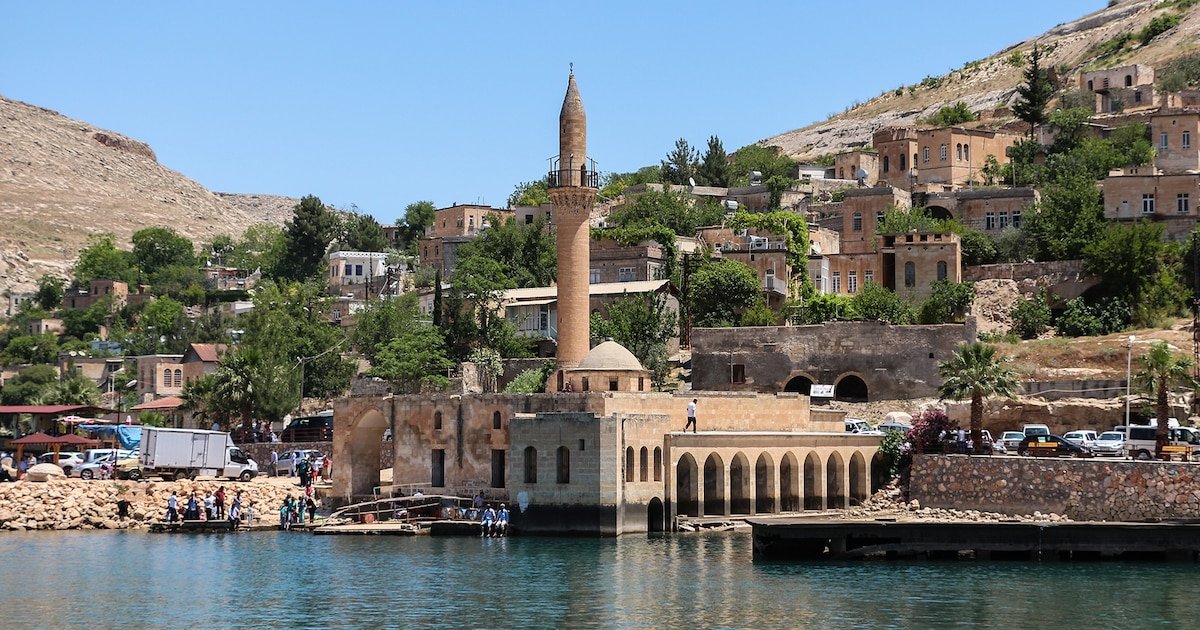
En el sureste de Turquía, a orillas del legendario río Éufrates, una ciudad emerge parcialmente de las aguas, envuelta en misterio y leyendas.
Halfeti, conocida como la “ciudad sumergida”, tuvo que transformar radicalmente su fisionomía tras quedar parcialmente bajo el agua por la construcción de la presa de Birecik, en el año 2000.
Actualmente, este enclave no solo atrae a visitantes por su singular paisaje y arquitectura sumergida, sino que también fascina al mundo con el enigma de sus famosas “rosas negras“, flores que han dado lugar a mitos, debates científicos y un renovado sentido de identidad local, según reportó CNN Travel.

A principios del nuevo milenio, la construcción de la presa de Birecik, una estructura de 60 metros de altura y 2,4 kilómetros de ancho, provocó la inundación de dos pueblos y diez aldeas en la provincia de Sanliurfa.
Según consignan medios locales, alrededor del 40% de Halfeti, que contaba con unos 2.600 habitantes, quedó sumergido bajo las aguas. Entre las edificaciones perdidas se encontraban numerosas casas de piedra, comercios y una parte significativa de la Merkez Camii, la mezquita central del siglo XIX.
La presa de Birecik forma parte de un ambicioso plan de desarrollo para el sureste de Anatolia, que incluye varias de estas estructuras a lo largo de los ríos Éufrates y Tigris. Su embalse, de 52 kilómetros cuadrados, se diseñó para regar 70.000 hectáreas de tierras agrícolas y generar unos 2.500 GWh de electricidad al año, suficiente para abastecer a casi un millón de hogares turcos.

Sin embargo, el impacto en la población local fue profundo y, en muchos casos, doloroso. Más de 6.000 personas tuvieron que ser reubicadas, y la comunidad perdió parte de su patrimonio tangible e intangible. Erhan Yildirim, investigador local, historiador y guía profesional, expresó a CNN Travel: “No se puede recuperar la cultura; la cultura permanece bajo el agua”.
Antes de la inundación, la economía de esta población era, básicamente, agropecuaria, con una reputación especial por la producción de pistachos. Muslum Karaman, operador de barco local, relató a CNN Travel que “la gente de Halfeti solía ganarse la vida con la cría de ganado y la agricultura”. Sin embargo, la llegada de la presa y la consiguiente transformación del entorno los obligaron a buscar nuevas formas de subsistencia.
Karaman explicó que la ciudad “ha cambiado completamente hacia el turismo“, y que muchos habitantes han adaptado sus viviendas para convertirlas en restaurantes, boutique y cafeterías. Esta reinvención económica le permitió a la comunidad mejorar su calidad de vida y aprovechar el creciente interés de los visitantes por la singularidad de Halfeti.

En la actualidad, Halfeti se posiciona como un destino turístico singular. Los visitantes llegan atraídos por la posibilidad de recorrer en barco, moto acuática o flyboard la arquitectura sumergida de la ciudad antigua.
El buceo se ha convertido en una de las actividades favoritas, impulsada por la apneísta turca Şahika Ercümen, quien en 2020 realizó una inmersión en Halfeti para sensibilizar sobre la contaminación por plásticos.
Además de la arquitectura sumergida, los turistas pueden realizar excursiones en barco hasta la fortaleza de Rumkale, situada a orillas del Éufrates. Este sitio histórico, cuyos cimientos datan del Imperio bizantino, permite a los visitantes explorar restos de fortificaciones armenias y conocer la compleja historia de la región, marcada por el paso de diferentes civilizaciones.

Uno de los mayores atractivos de Halfeti es el misterio de sus “rosas negras“, flores que han dado lugar a leyendas y debates científicos. Según la tradición local, es el único lugar del mundo donde florecen.
Yildirim sostiene que “si cultivas la rosa negra en cualquier otro lugar, nunca te dará el mismo color”. No obstante, expertos internacionales cuestionan su existencia. Michael Marriott, reconocido especialista floricultura, declaró a CNN Travel: “No creo que ninguna de las llamadas flores negras sea realmente negra”.
Por otra parte, Guy Barter, horticultor jefe de la Royal Horticultural Society del Reino Unido, coincide en que “las rosas negras, y en general las flores negras, rara vez son completamente negras, si no de un granate muy intenso o, como en este caso, de un rojo muy oscuro”.
El color oscuro de las rosas de Halfeti se atribuye a las condiciones únicas del suelo y el clima de la región. Marriott sugiere que los agricultores locales podrían estar utilizando raíces originales de las rosas, capaces de prosperar en suelos más ácidos, lo que oscurece los pétalos. Birsen Aşağı, vendedora local, atribuye el fenómeno a las “condiciones climáticas de aquí”.

A pesar de las dudas sobre su autenticidad, las rosas negras de Halfeti han adquirido fama internacional. Marcas como la perfumista británica Penhaligon’s han lanzado fragancias inspiradas en la flor, y los productos derivados se han convertido en un símbolo de la ciudad.
Las leyendas locales enriquecen el mito de la rosa negra. Una de ellas narra la historia de Adir, un arquitecto que construyó la mezquita de la ciudad, y su nieta Vartuhi, quien cultivaba las rosas más hermosas.
Vartuhi se enamoró de Firat, un huérfano del otro lado del río, pero su amor fue prohibido. Desesperados, ambos se arrojaron al Éufrates y, desde entonces, las rosas de Halfeti florecen negras en señal de luto.
Otra versión, relatada por Yildirim, atribuye la flor al Diablo, quien, tras el asesinato de una niña inocente, decretó que la rosa negra solo florecería en el lugar de su muerte, como símbolo de dolor y venganza.

A pocos kilómetros del pueblo, la fortaleza de Rumkale se alza como testigo de la historia milenaria de la región. Según CNN Travel, sus cimientos datan del Imperio bizantino, entre los siglos V y VI, aunque existen indicios de estructuras anteriores.
Durante los siglos XII y XIII, la fortaleza fue residencia del Catholicós, líder espiritual de la Iglesia armenia, y posteriormente cayó en manos de los mamelucos en 1292, antes de pasar al control del Imperio Otomano. La arquitectura de Rumkale, visible desde el río, recuerda la compleja y a menudo turbulenta historia de Anatolia, marcada por el cruce de culturas y religiones.
En 2013, Halfeti fue reconocida como parte de la red Cittaslow, un movimiento internacional que promueve la calidad de vida y la preservación de la cultura local.
INTERNACIONAL
Green Valley en América Latina: la oportunidad de la infraestructura digital verde en la era de la IA

Durante décadas, la infraestructura tecnológica desde los chips hasta los centros de datos fue un tema relegado a los márgenes de la discusión económica y política. Hoy, esa infraestructura es protagonista central. Es allí donde convergen la energía y los datos para impulsar la inteligencia artificial (IA), y donde se define buena parte de la competitividad futura de los países. En este nuevo mapa, América Latina y el Caribe tienen una ventana de oportunidad concreta: consolidarse como una región atractiva para el desarrollo de centros de datos verdes (green data centers), alimentados por energías renovables y articulados a una red regional que impulse la industrialización de servicios basados en IA.
La ventaja comparativa de la región es sólida y múltiple. Esta se basa en su matriz energética, su geografía y su capital humano. Según datos del Banco Mundial y la Agencia Internacional de Energía (AIE), más del 60% de la generación eléctrica en América Latina proviene de fuentes renovables, superando a regiones como Europa Occidental (40%) o Norteamérica (30%). Países como Uruguay, Paraguay y Costa Rica ya operan con matrices energéticas 100% limpias prácticamente, mientras que Brasil supera el 80% con una mezcla de hidroeléctrica, solar y eólica. Esta condición no es trivial. Para modelos de IA de gran escala, el costo energético puede representar hasta el 60% del costo total operativo de un centro de datos. Según datos de la UIT, el consumo de electricidad de Alphabet, Amazon y Microsoft alcanzó los 100 TWh en 2023, prácticamente lo que consumen juntos Colombia y República Dominicana en un año.
Sumado a lo anterior, la geografía y el clima juegan a favor de la región. Las zonas de altiplano, con temperaturas medias estables y buena conectividad, permiten reducir el gasto en enfriamiento uno de los mayores costos energéticos en operación de servidores. Bogotá, Quito, Montevideo o partes del sur de Brasil ofrecen condiciones ideales para alojar infraestructura de cómputo intensivo.
La estructura demográfica también representa un activo con una población de más de 400 millones de personas en edad laboral y un creciente número de profesionales en ciencia de datos, ingeniería de software, así como en redes. Las plataformas de formación como Platzi, Henry o Digital House están nutriendo un ecosistema de talento regional. Paulatinamente, universidades en Brasil, Chile, Colombia o México han avanzado en currículos orientados a IA y computación de alto rendimiento.
En el ámbito internacional, la oportunidad para captar inversión extranjera directa es clara. Europa, bajo el marco del Pacto Verde y la taxonomía de finanzas sostenibles, exigirá cada vez más una trazabilidad clara de la huella de carbono en las cadenas de valor digitales. Una empresa europea que entrena sus modelos en un green datacenter certificado en América Latina puede reducir sus emisiones reportadas y cumplir así sus compromisos climáticos. Asimismo, los avances tecnológicos están impulsando que las energías renovables sean incluso más asequibles que las tradicionales. Todo ello configura argumentos de pesos de atracción de capital europeo, asiático o norteamericano.
Ahora bien, la oportunidad no radica solamente en hospedar servidores, ni en hacerlo individualmente país a país. El valor agregado está en que estos centros de datos se conviertan en motores de desarrollo tecnológico local, con lógica de integración regional. Esto exige políticas de encadenamiento productivo que prioricen proveedores locales de infraestructura, servicios de nube, software y ciberseguridad; acceso preferencial a pymes tecnológicas; y condiciones para que universidades y centros de investigación accedan a capacidad computacional como bien público. Y articulación de una red federada de centros de datos interconectados, con redundancia, interoperabilidad y gobernanza compartida, que permita: el entrenamiento distribuido de modelos de IA; el almacenamiento de grandes volúmenes de datos públicos y privados; la provisión de servicios a gobiernos, empresas y universidades. Esta red también puede convertirse en un activo geopolítico, al reducir la dependencia tecnológica con respecto a infraestructuras extrarregionales.
- Establecer marcos regulatorios nacionales y regionales (o al menos entre algunos países impulsores) para green datacenters, con criterios técnicos de certificación.
- Establecer incentivos tributarios y requisitos de eficiencia energética.
- Crear un fondo regional de infraestructura digital verde, con apoyo de los bancos regionales (BID, CAF, Banco Mundial) y bancos de desarrollo nacionales, que cofinancie proyectos con alto impacto en empleo, transición energética y digitalización.
- Incentivar consorcios público-privados para el desarrollo de modelos de IA sectoriales, en salud, educación, movilidad, energía o agroindustria, utilizando la capacidad de cómputo regional como palanca de innovación.
- Incorporar cláusulas de sostenibilidad digital en los acuerdos comerciales, incluyendo interoperabilidad de datos, transferencia tecnológica y estándares abiertos para plataformas de IA.
- Establecer un observatorio latinoamericano de huella digital y climática, que mida el impacto ambiental de la infraestructura tecnológica y también promueva prácticas responsables.
La buena noticia, además, es que en algunos países las políticas públicas están – esta vez sí – , acelerando el paso al ritmo de la oportunidad. Brasil ha aprobado incentivos fiscales para infraestructura digital con eficiencia energética. Chile presentó en 2022 su Hoja de Ruta de Centros de Datos al 2030 con metas de sostenibilidad. En México, estados como Querétaro han consolidado clústeres tecnológicos donde operan Oracle, Microsoft y AWS. A ellos esperamos que se unan Uruguay y Argentina, si avanzan con marcos regulatorios nacionales impulsados desde sus presidencias.
La región no necesita copiar Silicon Valley o Shenzhen. Puede crear su propio Green Valley: un ecosistema donde la infraestructura digital, y en particular los centros de datos verdes, estén al servicio de la sostenibilidad, la soberanía tecnológica y el desarrollo humano. El momento de actuar es ahora. La inteligencia artificial será el motor económico de las próximas décadas. América Latina puede ser no solo consumidora, sino productora y exportadora de soluciones si logra construir la infraestructura inteligente y verde que el siglo XXI exige.
INTERNACIONAL
Trump signs $9B rescissions package into law, revoking funding for foreign aid, NPR
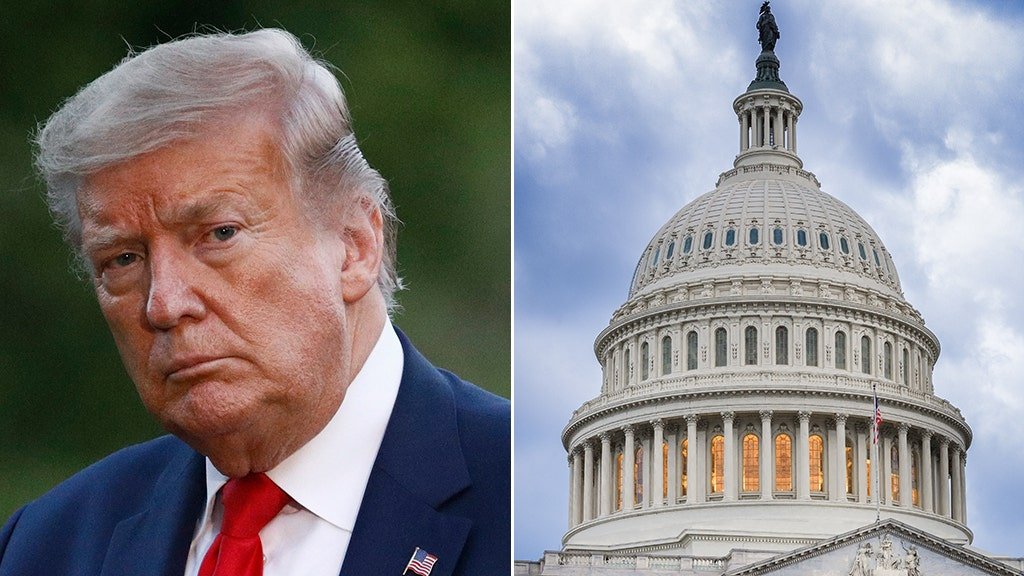
NEWYou can now listen to Fox News articles!
President Donald Trump signed into law his roughly $9 billion rescissions package to scale back already approved federal funds for foreign aid and public broadcasting on Thursday, after both chambers of Congress approved the legislation earlier in the month, sources familiar to the matter have confirmed.
The signing marks another legislative victory for the Trump administration just two weeks after the president signed into law his massive tax and domestic policy measure, dubbed the «big, beautiful bill.»
The rescissions package pulls back nearly $8 billion in funding Congress already approved for the U.S. Agency for International Development (USAID), a previously independent agency that provided impoverished countries aid and offered development assistance.
However, the Trump administration has faced layoffs and has been absorbed into the State Department amid concerns from the Trump administration that the organization did not advance U.S. core interests.
‘LONG OVERDUE’: SENATE REPUBLICANS SLAM THROUGH TRUMP’S CLAWBACK PACKAGE WITH CUTS TO FOREIGN AID, NPR
President Donald Trump talks to reporters during a Cabinet meeting. (Getty Images)
The rescissions package also pulls more than $1 billion from the Corporation for Public Broadcasting (CPB) that provides federal funding for NPR and PBS.
The House previously approved its version of the rescissions package in June, and voted on the final version of the measure early on Friday after the Senate narrowly approved the measure by a 51-48 margin early on the morning of July 17. Republican Sens. Susan Collins of Maine and Lisa Murkowski of Alaska voted alongside Democrats to oppose the package.
Senate Majority Leader John Thune, R-S.D., said that the measure aligned with other priorities to eradicate waste, fraud and abuse within the federal government and is a step in the right direction.
«I appreciate all the work the administration has done in identifying wasteful spending,» Thune said in a speech ahead of the vote. «And now it’s time for the Senate to do its part to cut some of that waste out of the budget. It’s a small but important step toward fiscal sanity that we all should be able to agree is long overdue.»
SENATE MARCHES TOWARD PASSING TRUMP’S $9B CLAWBACK BILL AFTER DRAMATIC LATE-NIGHT VOTES
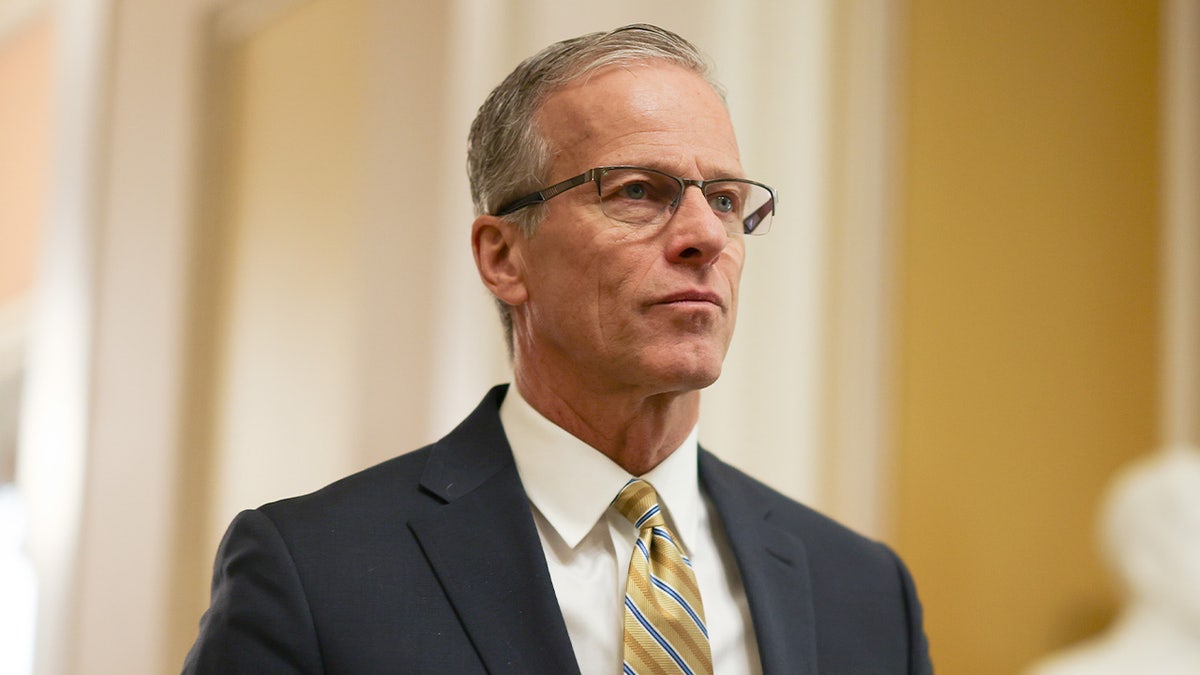
U.S. Senate Majority Leader John Thune (R-SD) heads to the Senate Chamber to vote on a bill on January 22, 2025 in Washington, DC. (Kayla Bartkowski/Getty Images)
Meanwhile, Democrats have said that the cuts to foreign aid are a win for China and Russia, and that the package puts national security at risk. Additionally, Democrats argue Republicans’ employment of rescissions sets a dangerous precedent that could jeopardize a host of programs down the line.
«If Republicans slash more American aid, it will create a dangerous vacuum that the Chinese Communist Party will continue to eagerly fill,» Senate Minority Leader Chuck Schumer, D-N.Y., said on July 15 on the Senate floor.
TRUMP’S $9 BILLION CLAWBACK PASSES FIRST SENATE TEST, WHILE MORE HURDLES AWAIT
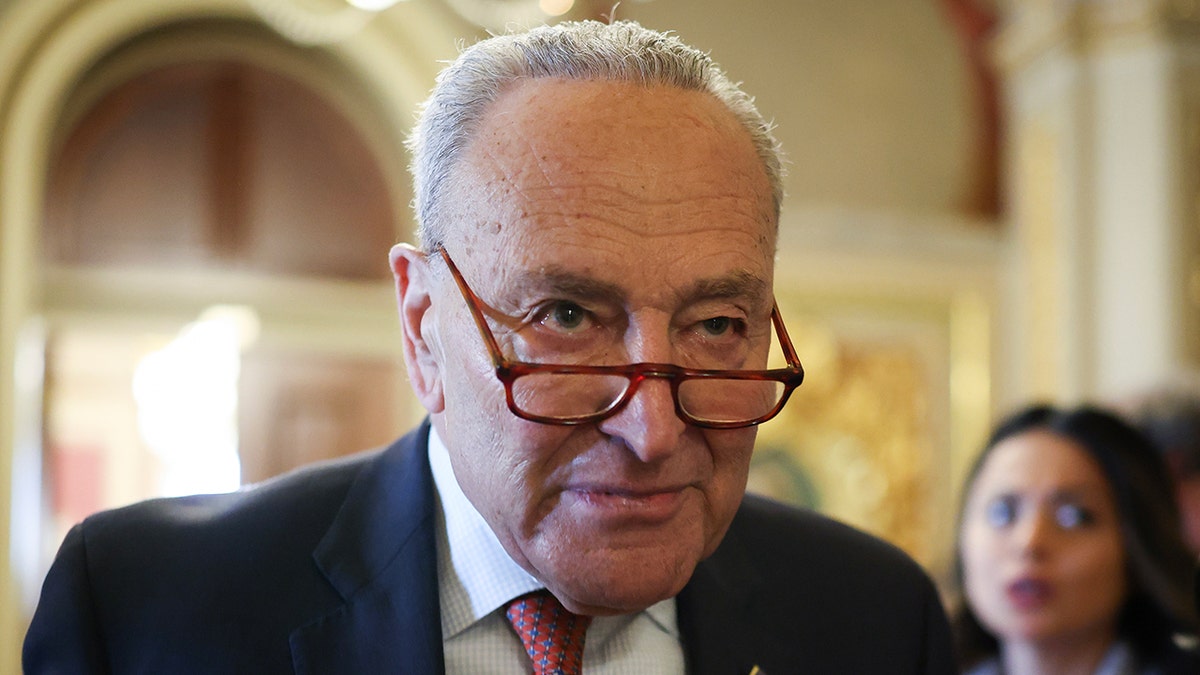
A memo from a major liberal grassroots group called out Democratic lawmakers like Senate Minority Leader Chuck Schumer, D-N.Y., for their passive approach to resisting President Trump. (Kayla Bartkowski/Getty Images)
«They are using pocket rescissions to poison the bipartisan appropriations process, to break the law to steal funds that Congress appropriated, and they’re doing it at a party-line vote,» Schumer said. «Worse, they’re letting Donald Trump decide for himself which programs to defund, and that puts everything at risk – healthcare, education, food assistance, public health. Everything – everything – becomes at risk. That is what happens if a package like this is allowed to become law.»
CLICK HERE TO GET THE FOX NEWS APP
Although Trump previously attempted to advance a rescissions package in 2018 that also targeted foreign aid and public broadcasting funds during his first term, it failed to gain support in the Senate after Collins and then-Sen. Richard Burr, R-N.C., voted against it.
The last time Congress approved a rescissions package was in 1999.
Fox News’ Alex Miller contributed to this report.

 POLITICA3 días ago
POLITICA3 días ago🗳️ El chamuyo de las elecciones en la Provincia: se postulan, pero no a asumen

 POLITICA3 días ago
POLITICA3 días agoFuerte malestar en la CGT por la ausencia de gremialistas en las listas bonaerenses del peronismo

 ECONOMIA2 días ago
ECONOMIA2 días agoEl consumo en Argentina crece 4% en junio, ante menor inflación y más crédito















